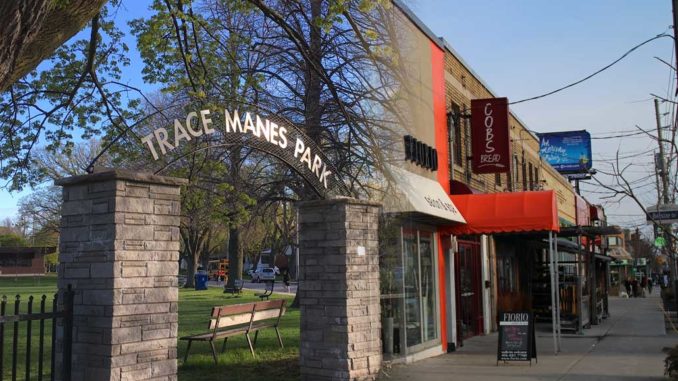
Eighty per cent of Canadians live in cities. Cities are the economic engine driving Canada. Likewise, neighbourhoods are the economic engine of cities. Given their circumstances, some neighbourhoods do better than others and no doubt Leaside is one of them. Why? Perhaps Leaside’s early success was a result of the good fortune bestowed upon us by Frederick Todd, the landscape architect whose design set us on the path to becoming one of Canada’s first live-work towns. Could our live-work roots be one of the contributing factors for this success? And if so, what if we were to lose that competitive advantage – be it an economic hit to the success of the employment lands in the business park, inept zoning decisions that inhibit decision-making, or simply being outmanoeuvred by more aggressive business interests looking to attract investment and create new jobs in their neck of the woods rather than ours.
Last September, I wrote about laneway housing and how changes to the bylaws might create opportunities for those of us in Leaside living on a laneway. I have been following this development closely because I am intrigued by the prospect of eventually graduating from my home office and moving into a full-blown dedicated workspace situated in my backyard with a front entrance on the lane. You see, realizing the live-work dream is something I have been pining for. Not just a live-work situation as an individual, but a vision to be a part of an entire “live-work neighbourhood.” Think along the lines of the success that has become New York’s Greenwich Village. A live-work neighbourhood is one where most of its residents work within five to 10 minutes from where they live and can address most of their daily needs within a 10-minute walking radius of their home, workplace, or live-work unit.
The live-work concept is not an entirely understood form of space
…at least when it comes to being spelled out in the bylaws. There are degrees of “work-use intensity” when categorizing live-work types. The simplest form is “home occupancy” – “I’m working from home” or “we have a home office.” The next form would be categorized as a truly “live-work” space where work activity occurs but remains secondary to the residential nature of the space. The most intense form would be a “work-live” space where the primary use is commercial or industrial and the residence becomes secondary in use of the space. At this level of work intensity, there might be noise (i.e. assembly, light manufacturing), employees, walk-in trade, and direct sales.
For the latter two models, Thomas Dolan, a respected California-based urban landscape architect/designer/author uses the terms: “live-with” (e.g. artist’s loft, home office), “live-near” (e.g. separated work area, possibly unique entrance, clearly walled-off area or floors), and “live-nearby” (e.g. housing over retail, converted garage, separate work unit in a courtyard) to further categorize live-work space. I’ll add a fourth term which would be “live-close” (e.g. the Canada Wire factory on the east side of Laird with its workers resident on the west side, and the proposed RioCan development at Laird and Eglinton where there will be considerable office space adjacent to the residential towers where people can work).
The very nature of work is sure to change given the technological advances on the near horizon. Dolan notes that “live-work has been occupied and experimented with (mostly by trial and error, in a relative regulatory vacuum) for most of the last half of the 20th century.” This seems to be the case in Toronto. The City has not established a clear standard for zoning live-work or work-live spaces. Without a consistent set of policies and bylaws, it becomes difficult for property developers looking at new forms of space or an entrepreneur choosing a new location to set up shop and proceed with confidence. Not to mention how residents should perceive live-work actions – let’s say when your neighbour is selling products from home, or the hairstylist and massage therapists next door have customers continually taking up limited street parking.
Balanced development will lead to revitalization
I support increasing the amount of live-work space made available in Leaside as well as updating the current bylaws to clearly define the rules of engagement. Making live-work space available along the main street perimeter of the employment lands (and the area between Vanderhoof and Wicksteed) would provide a gentle transition from the industrial areas in the south toward the residential areas being developed along Eglinton to the north. Continued support of the larger-scale manufacturing operations while offering a variety of new commercial space targeted toward small business as well as emerging entrepreneurs would create the type of balanced development that the employment zone requires to lead the revitalization of this valuable but underutilized asset.
How can we attract fast-growing companies and investment to Leaside? How can we attract the best employees to work here? What is our competitive advantage? Let us know at .


